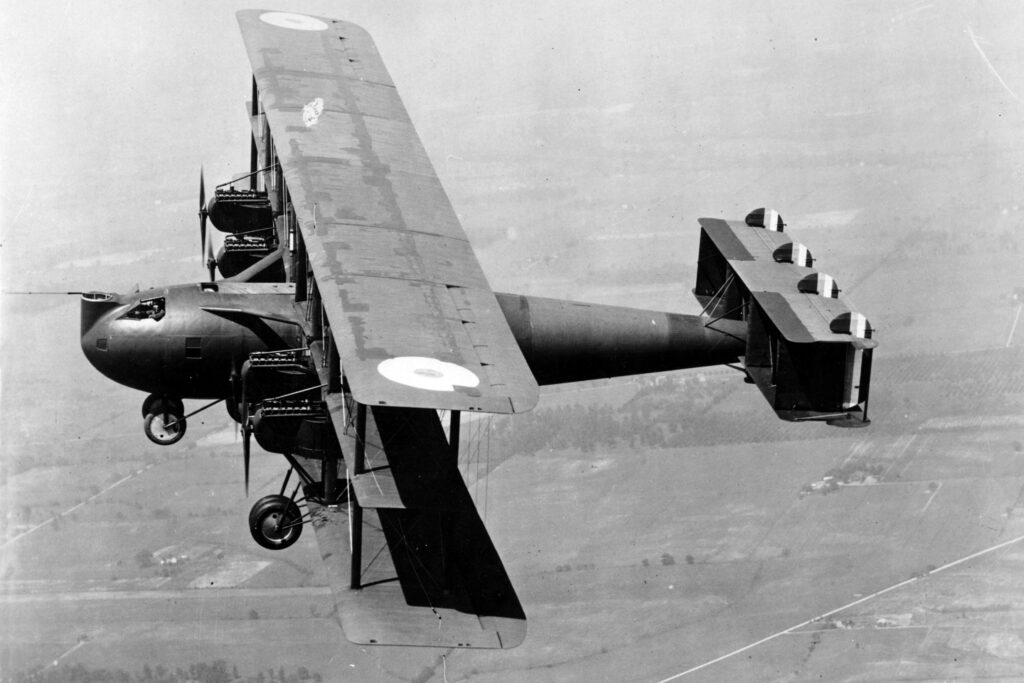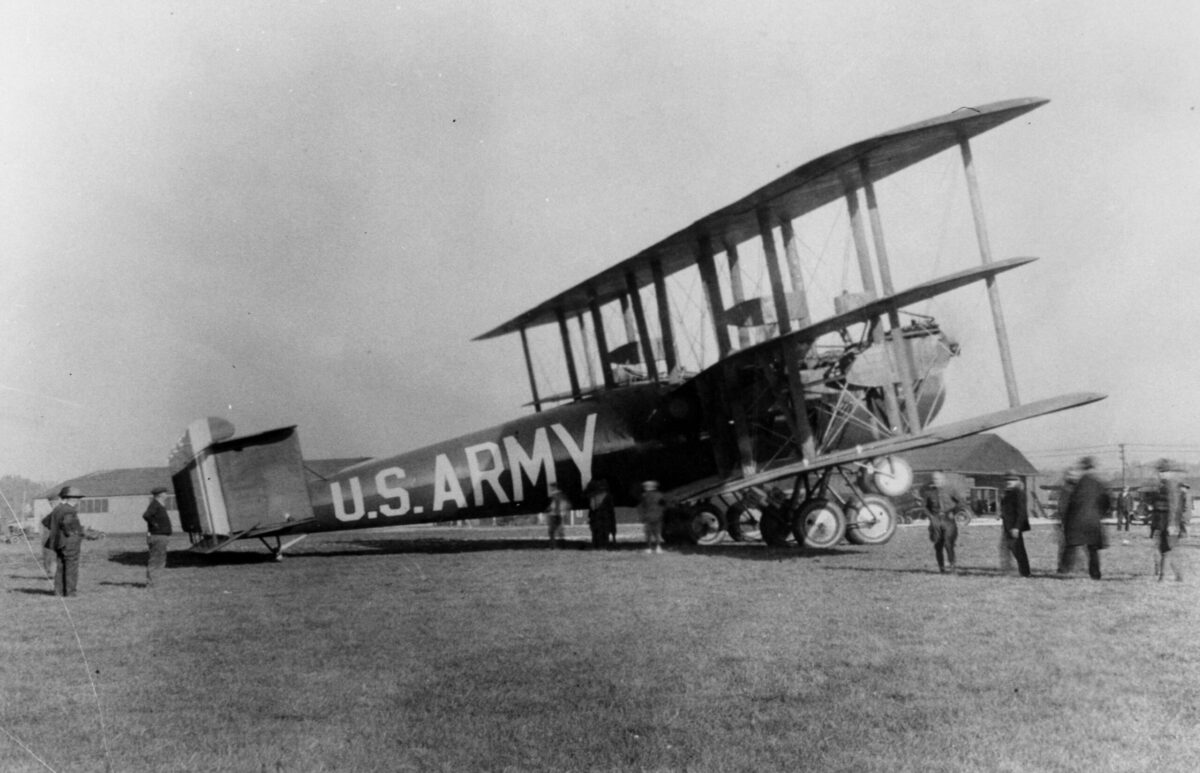As far back as 1920, the fledging Air Service branch of the U.S. Army perceived the need for a truly long-range bomber force that was capable of reaching far beyond the enemy’s lines to attack his means of supply and production. Early air power visionaries like Brigadier General Billy Mitchell went so far as to suggest that the threat of retaliation from the air by such a force would in itself be sufficient to discourage potential enemies from threatening U.S. shores (what Americans would later call “strategic deterrence” during the Cold War). In 1921, with this concept in mind, the Army ordered the construction of the Witteman-Lewis XNBL-1, a giant six-engine triplane which became known as the “Barling Bomber” after its designer, Walter Barling. But when the giant triplane took off on its maiden flight in 1923, it was barely able to lift its own weight, let alone carry a load of bombs any distance. A failure, it was soon dismantled and scrapped.
The idea of a long-range bomber was shelved for 10 years, until the Army issued a specification in 1934 for an aircraft that could carry 2,000 pounds of bombs at 200 mph over a combat radius of 2,500 miles. Seen as potentially operating from the frontiers of U.S. territories like Hawaii and the Panama Canal Zone, such a bomber would provide “hemispheric defense,” the 1930s vernacular for strategic deterrence. After reviewing various design proposals, a contract was awarded to the Boeing Airplane Company to build a four-engine design classified as the XBLR-1 (bomber, long-range, later redesignated the XB-15). Making its first flight in 1937, the huge new airplane—the largest built to that date in the United States—proved to be seriously underpowered, falling well short of the speed, altitude and range performance expected by the Army. Though only one prototype was completed, it had given Boeing and the Army extremely useful experience with very large airplanes— something they would need within just a few years.

In 1935, with the Boeing project still in the early stages of construction, the Army issued a second and even more ambitious specification for another long-range bomber, calling for increases in both range and payload. The go-ahead to complete design studies was given to the Douglas Aircraft Company, one of only two firms to indicate any interest in the project. The aircraft, originally designated the XBLR-2 and then changed to the XB-19, would exceed the XB-15 by a margin of 35 percent in size and 50 percent in weight. Construction of the prototype began in 1937, but for a variety of reasons the colossal aircraft did not fly until June 1941, by which time it was completely obsolete. The XB-19—the largest landplane in the United States when it flew—fostered many innovations such as tricycle landing gear and power-boosted controls, but as a bomber, it was a total flop.
In 1940 an Army Air Corps think tank known as the Kilner Board (whose membership included Charles A. Lindbergh) was becoming alarmed about German successes in the European war. They recommended immediate development of a new “superbomber” with unheard-of performance—one that could carry 2,000 pounds of bombs over a distance of 5,000 miles at speeds approaching 400 mph. Of the four companies participating in early design proposals in 1941, Boeing emerged as the leader with its Model 345—the XB-29. The most advanced bomber of World War II, the B-29 would shortly become the highest priority aircraft project in the United States. More than any other airplane flown up to that time, it would bring about a paradigm shift in the concept of strategic air power. Like it or not, the B-29 would usher in the Atomic Age.
Originally published in the May 2006 issue of Aviation History. To subscribe, click here.





